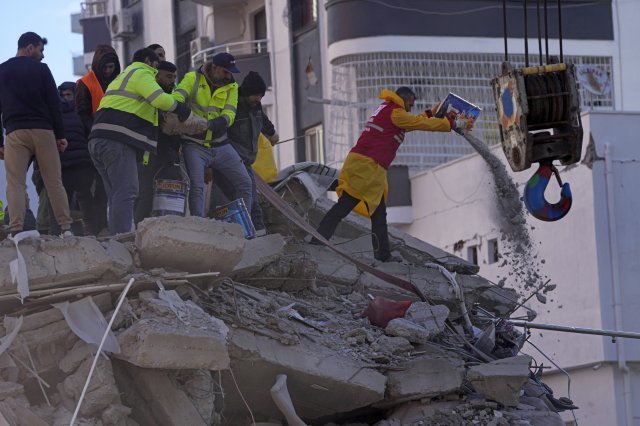Dissatisfaction about the ‘earthquake tax’ erupted in Turkiye, which was hit by a 7.8 magnitude earthquake. Although it has been on the trend of earthquakes for more than 20 years, a controversy arose over where to use it as buildings that were not properly designed for earthquake collapsed due to the earthquake that occurred on the 6th.
According to foreign media such as the BBC on the 7th (local time), the residents of Türkiye are skeptical and angry about the earthquake tax imposed by the government in the wake of the earthquake 20 years ago.
The Turkiye government has imposed an earthquake tax after the 1999 northwestern Izmit earthquake that killed more than 17,000 people. It is located in the Anatolian fault zone where the tectonic plates interlock, so earthquakes are frequent, so it is to prevent damage and develop response capabilities. Turkey has had seven earthquakes of magnitude 7.0 or greater in the past 25 years.
The BBC pointed out that about 88 billion lire (about 5.8 trillion won) is estimated to have been spent on disaster prevention and emergency response development, but the Turkiye government has never publicly explained how this tax is spent.
AFP also reported that residents of Gaziantep, the epicenter of the earthquake, poured out their complaints about the earthquake, saying that rescuers did not arrive for 12 hours after the earthquake. “People rose up in the morning. The police must intervene. Where have all our taxes collected since 1999 gone?”
Germany’s Jutrojsetzeitung also estimated that “it is possible that the earthquake tax was misappropriated,” saying, “After the earthquake in Turkiye, questions are being raised about whether better buildings could have prevented more casualties.”
 Rescuers search for a missing person in the rubble of a building collapsed in an earthquake in Adana, southern Turkey, on July 7 (local time). Adana = AP/Newsis
Rescuers search for a missing person in the rubble of a building collapsed in an earthquake in Adana, southern Turkey, on July 7 (local time). Adana = AP/NewsisSeveral foreign media cited poorly designed earthquake-resistant buildings as one of the factors that increased earthquake damage. CNN said, “Many places in Turkey are earthquake risk areas. “But not all buildings are built according to seismic standards, and especially older buildings with many defects in design and construction cannot withstand impacts,” the expert said. explained by citing
The Guardian also analyzed, “Most of the buildings that collapsed appear to have been built before 2000, when new regulations on earthquakes were applied.” “Many buildings were already vulnerable to collapse.”
A 7.8-magnitude earthquake and 125 aftershocks with a magnitude of 4.0 or higher, which occurred at dawn on the 6th, devastated the southern Turkiye and northern Syrian border areas. More than 8,100 people have been killed, including 6,234 in Turkey and 2,530 in Syria. The death toll is likely to rise as search and rescue operations are ongoing.
President Recep Tayyip Erdogan Türkiye declared a three-month state of emergency in 10 southeastern provinces badly hit by the quake.
Source: Donga
Mark Jones is a world traveler and journalist for News Rebeat. With a curious mind and a love of adventure, Mark brings a unique perspective to the latest global events and provides in-depth and thought-provoking coverage of the world at large.